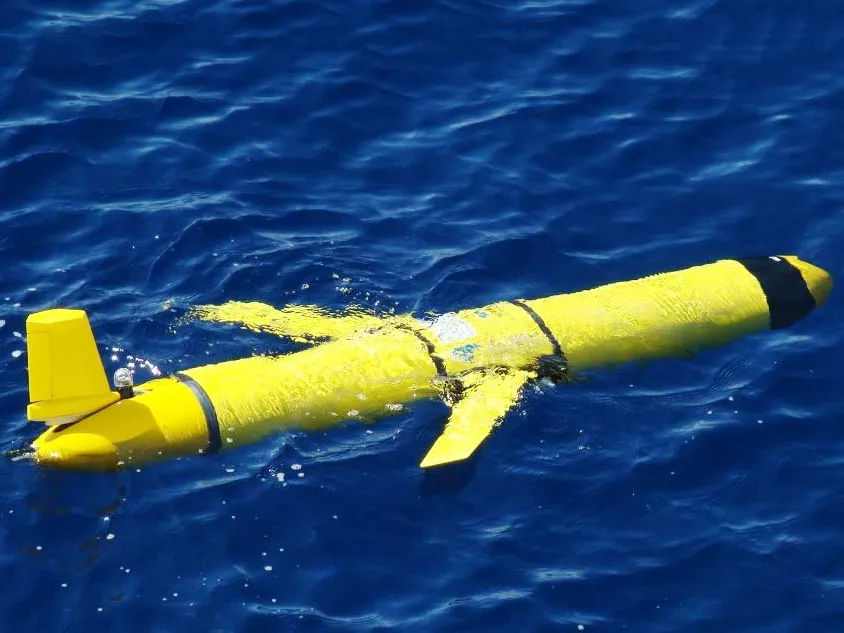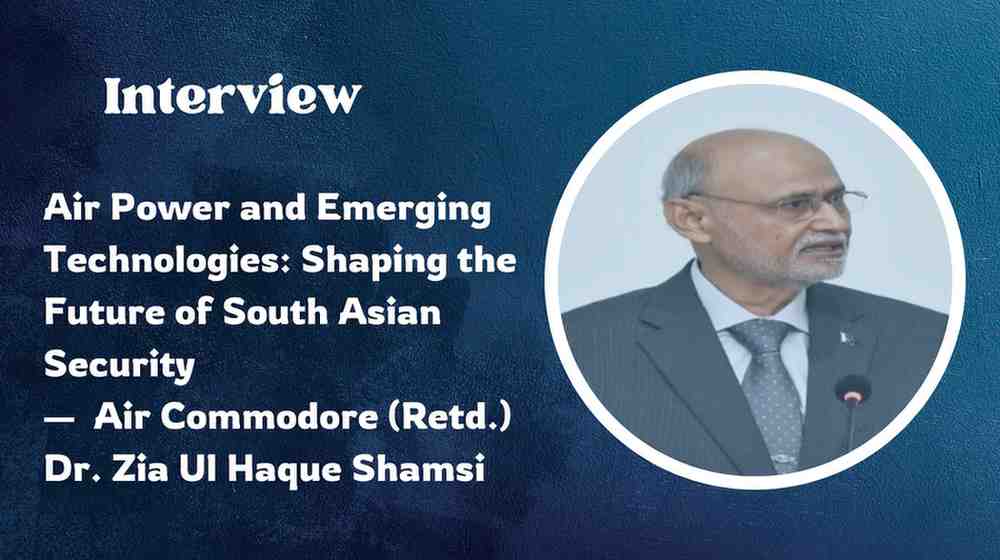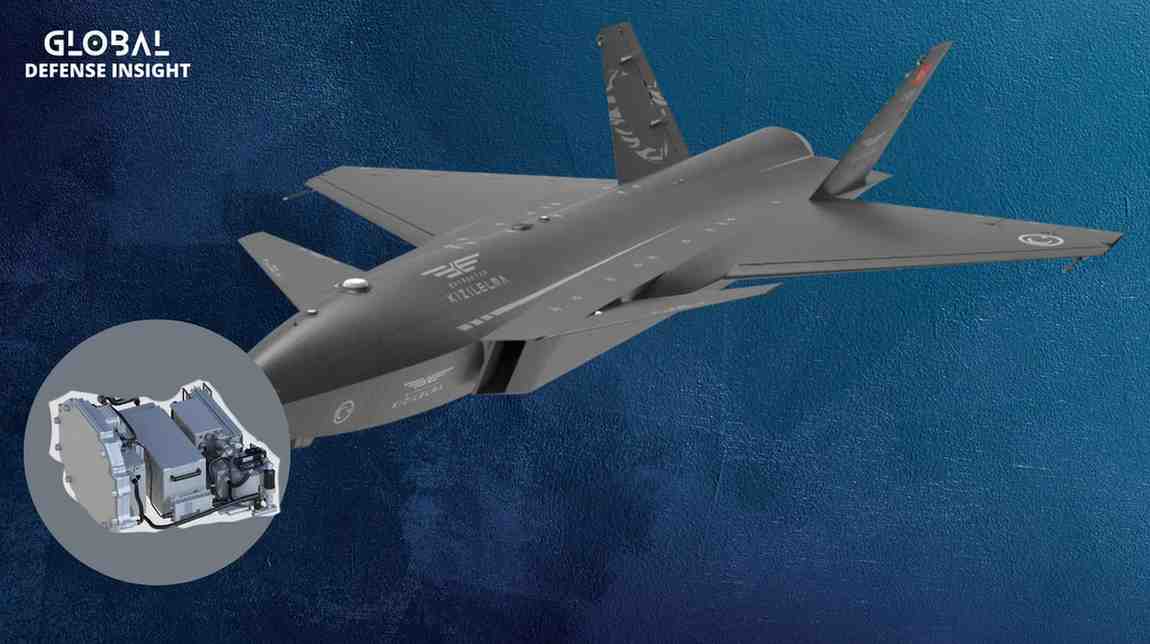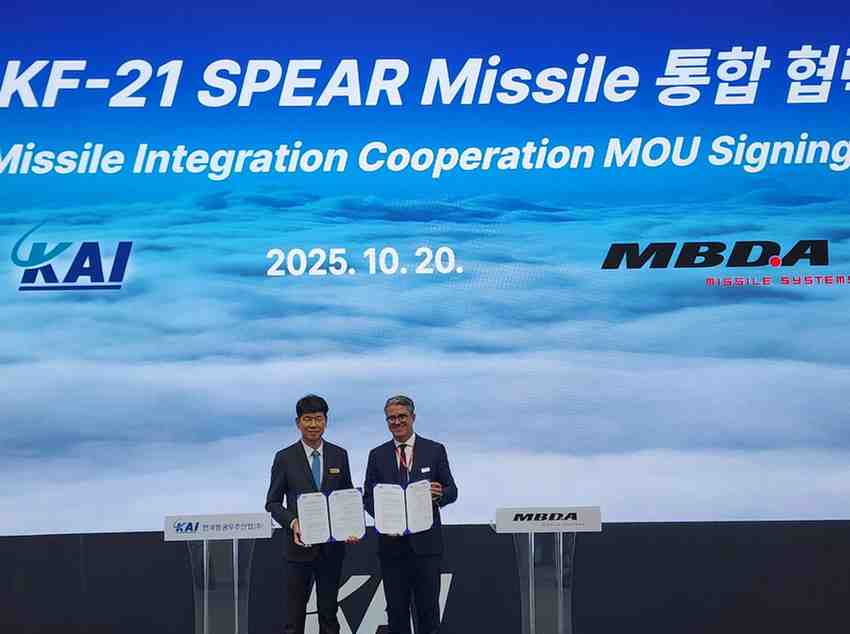“In naval strategy, there’s more to it than ‘my battleship’s bigger than yours’.”
– Admiral J.C. Wylie
Background
Bangladesh’s economy and security depend on its marine importance. The national coastline is 710 km surrounding the Bay of Bengal. The EEZ and continental shelf have 200 and 350 nm ranges. This provides vast resource exploration and exploitation opportunities. The fishing sector contributed 3.57% of GDP in 2018 with 4.2 million metric tons of fish produced. Thus, good maritime plans are needed to maximize the resources. Underwater drones enhance surveillance, operational adaptability, resource management, and monitoring of the environment. They can maintain Sea Lines of Communication (SLOC), combat marine crimes, and protect the resources that concern a modern-day maritime threat. The economy and defense of Bangladesh rely on its marine value. The country has 710 kilometers of the Bay of Bengal coastline. The EEZ and continental shelf span 200 nautical miles. Thus, it offers several resource exploration and exploitation potential. By 2018, the fishing sector contributed 3.57% of the GDP, based on 4.2 million tons of fish production. Maritime policies are important to maximize resource use. Underwater drones are vital to marine strategy because of their superior surveillance, operational flexibility, resource management, and environmental monitoring.
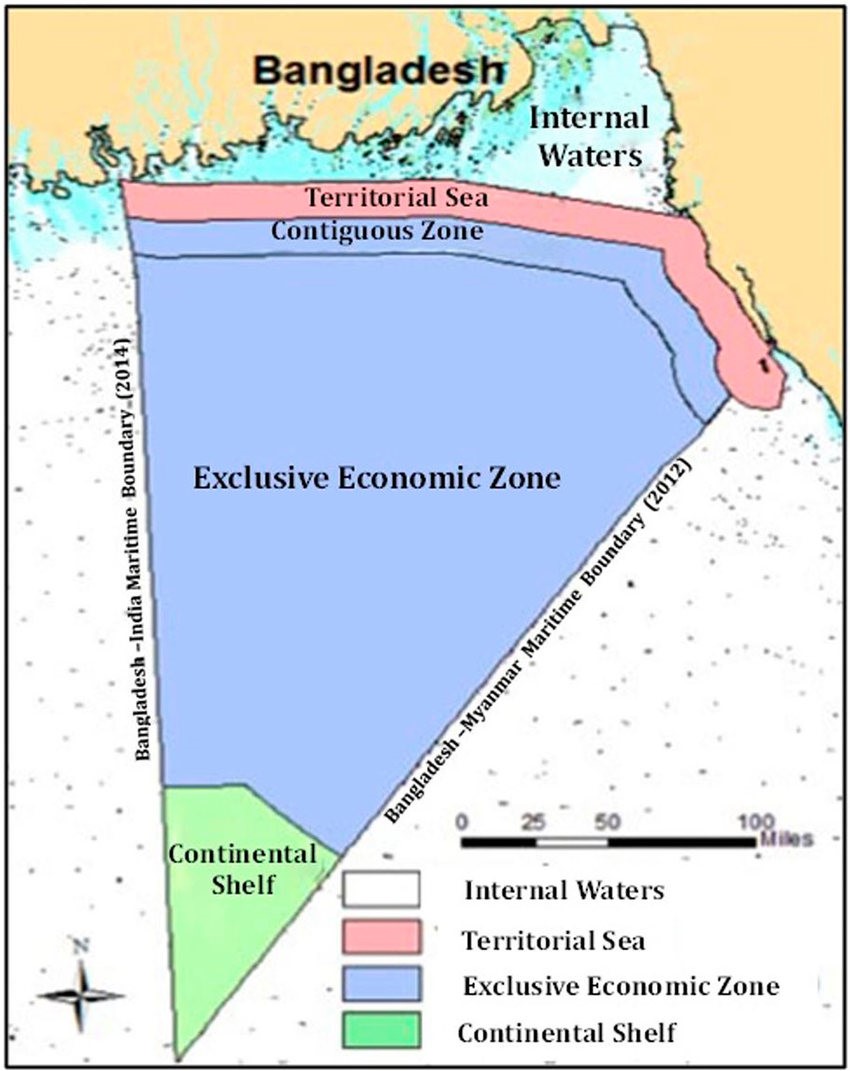
Understanding Underwater Drones
Underwater drones have a lengthy historical background, with initial prototypes being developed in the 1950s primarily for military and research use. Throughout the years, technology has advanced and become extensively utilized in search and rescue, infrastructure, scientific research, and environmental conservation. Notable events include the creation of a machine that recovered a misplaced nuclear bomb, the finding of the Titanic, and progress in lithium-ion battery technology. Essentially, drones have enhanced the safety and cost-effectiveness of various activities. Based on the development and deployment there are mainly three categories of UUV (Unmanned underwater vehicle):
Remotely Operated Vehicles: ROVs are controlled and tethered and are quite important for the Navy’s strategic operations. These vehicles are used for underwater detailed inspections, salvage operations, and exploring dangerous, high-risk areas, where the lives of divers are endangered by numerous external factors.
Autonomous Underwater Vehicles: AUVs are self-propelled and untethered. They are used for numerous autonomous naval missions. Since they are designed to operate without any human interference, their use for oceanographic research, mapping the ocean floor, and monitoring of the environment is quite relevant.
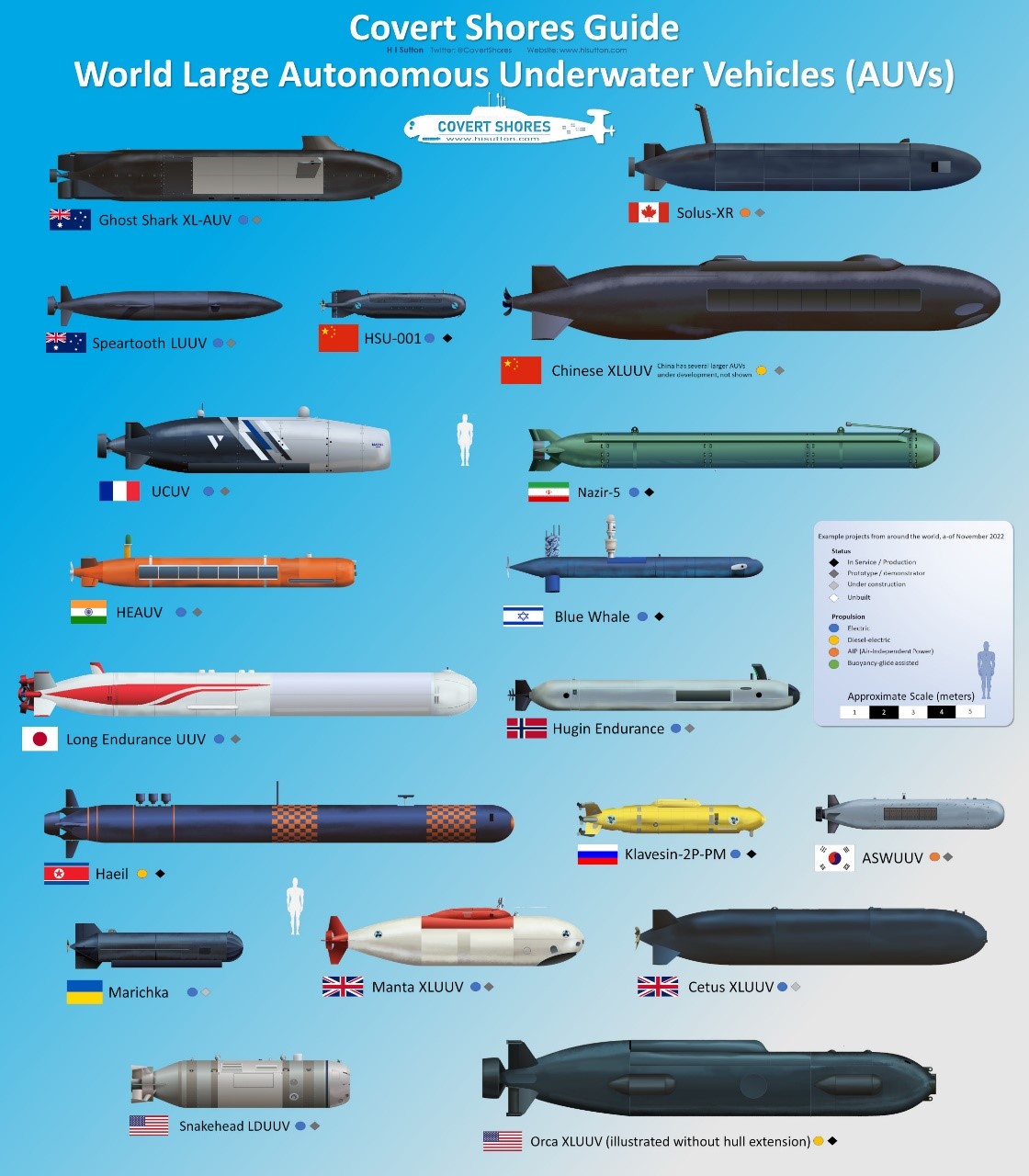
Hybrid Vehicles: This type of underwater vehicle combines remotely operated and autonomous types. They are important for the Navy since they can be controlled remotely and operate without human interference. They are adaptable to various environmental conditions and various types of missions.
Besides these UUVs, Unmanned Surface Vehicles (USVs), or drone ships, offer multiple advantages in maritime operations such as surveillance, reconnaissance, and defense. Unlike UUVs, USVs operate on the water’s surface, which allows for visible presence and real-time data collection necessary for both military and civilian purposes.
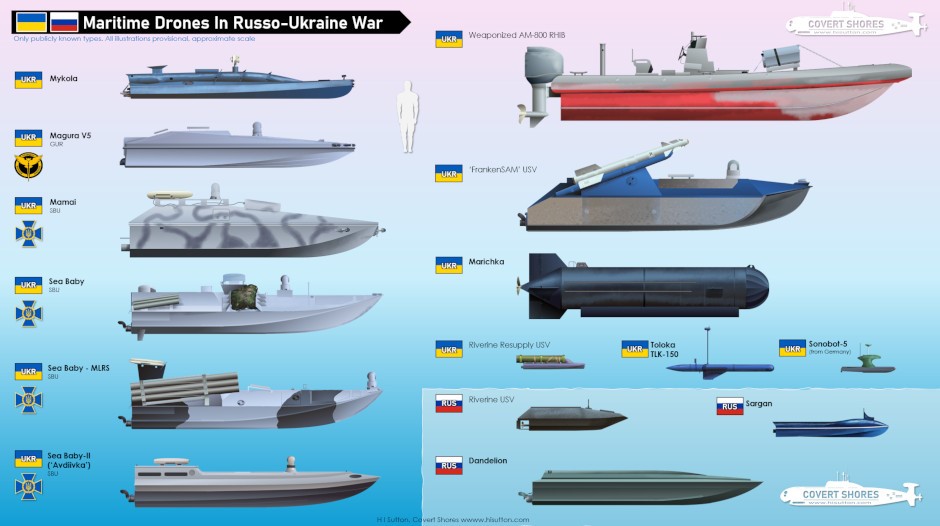
Strategic Advantages of UUVs
- Enhanced Maritime Surveillance and Security
UUVs have the potential to provide persistent and thorough stealth surveillance of maritime borders and EEZs. As such, these autonomous systems can effectively detect and counter wildcat smuggling, human trafficking, illegal fishing, and other suspicious or outright dangerous activities. For example, recently Cellula has developed an 8.5 m-long, 1 m-diameter vehicle for the Canadian Department of National Defense’s science and technology organization, Defense Research and Development Canada (DRDC). This vehicle is capable of conducting long-term underwater surveillance at depths of up to 3,000 m and covering a range of 2,000 km. The name of the product is Solus-LR, which stands for Long Range.
- Cost-Effective Operations
Operating UUVs costs less as compared to regular vessels. At the same time, they do not need constant resupply; UUVs have a smaller capacity and a longer endurance in terms of operation time. In addition, the people involved in these operations need to keep them functioning are fewer.
- Environmental Monitoring and Quick Decision Making
With the integration of the latest technologies like artificial intelligence (AI), UUVs can be used to gather data on the status of the marine environment an asset for climate change research and pollution tracking and mitigation. The gathered data can also monitor marine resources, serving research and management purposes.
UUVs can be escorted to the suspected site of minefields by personnel before being deployed. This, combined with the newly developed mine countermeasure systems can effectively locate and deal with these threats. Additionally, UUVs can be used in underwater demining.
- Force Multiplier and Extending the Naval Operational Reach
UUVs can help to cover larger areas. At the same time, with these autonomous systems, it is possible to carry out underwater missions or those deep inland far from the ports to land the units.
- Leading to the Changes in Naval Fleet Composition
Finally, the creation and subsequent widespread use of UUVs will lead to changes in naval fleet composition. Specifically, shifts in the overall number and staffing of the vehicles will be required.
As Unmanned Aerial Vehicles (UAVs) revolutionized aerial warfare, Unmanned Underwater Vehicles will transform naval warfare. Given Bangladesh’s strategic location and its ambitions for the maritime domain, it will need to integrate UUVs to secure its birth rights in the Bay of Bengal.
Significance to Bangladesh’s Maritime Strategy
UUVs provide an excellent chance for Bangladesh to enhance its maritime power and guarantee its national security and economic interests. The following is how it can be incorporated:
- Develop extensive national UUV strategy
- Establish a dedicated UUV program
- Allocate resources
- Foster cooperation with international partners.
Potential Issues and Solutions
- Cost: Look for cheaper UUV alternatives to encourage their application and seek international assistance’s financial backing
- Technical knowledge: There could be a substantial investment in human resources by establishing educational and training programs to learn from international experts and regional countries, along with improved relationships with the concerned research institutions.
In conclusion, implementing Unmanned Underwater Vehicles from a strategic perspective signifies a pivotal moment for Bangladesh as a nation and its naval forces. By implementing underwater drones, the nation can gain significant benefits in bolstering marine security, facilitating economic growth, and advancing scientific research. By allocating more funds to the advancement of a reliable and exceptional Unmanned Underwater Vehicle (UUV) program, bolstering the country’s capabilities, and adapting to evolving technological trends, the nation would ensure the absolute protection of its maritime territory and facilitate the sustainable utilization of resources, while also harnessing the economic opportunities presented by its marine sector. Therefore, it can be inferred that the deployment of UUVs will not only strengthen the marine capabilities of the Bangladesh Navy but also contribute to the country’s efforts to maintain peace in the Bay of Bengal and safeguard its maritime interests.

Arman Ahmed
Arman Ahmed is a third-year International Relations student at the Bangladesh University of Professionals (BUP). He has a strong academic background in geopolitics and international affairs, with a particular focus on Eurasian and Southeast Asian issues. Arman is passionate about contributing to the field of international relations through critical writing and research. His previous works include analyses of geopolitical trends in the Indo-Pacific and the complexities of regional security dynamics.
- This author does not have any more posts.


